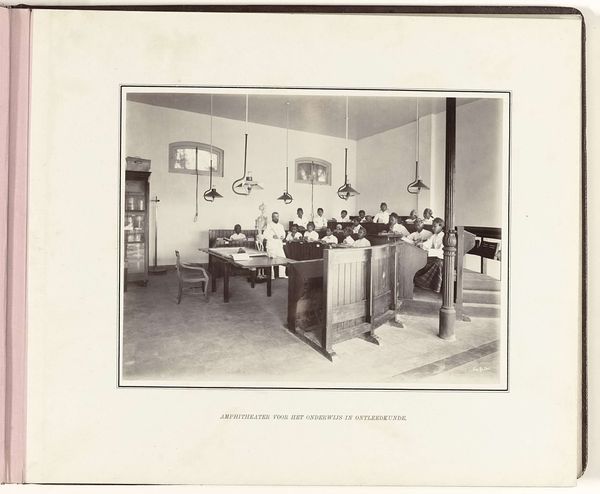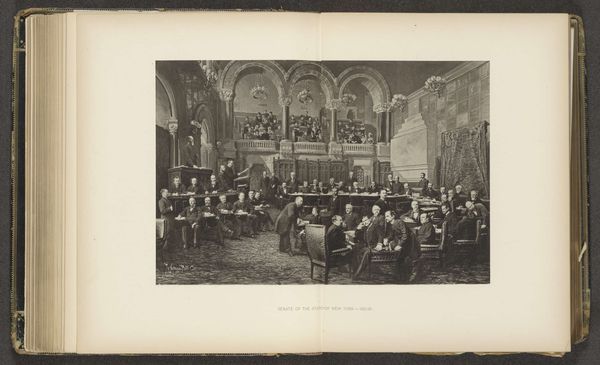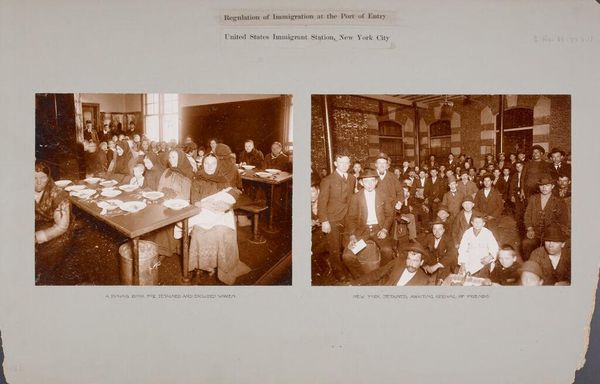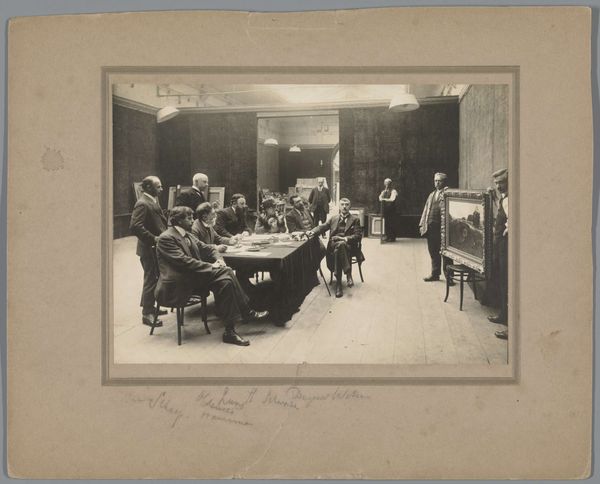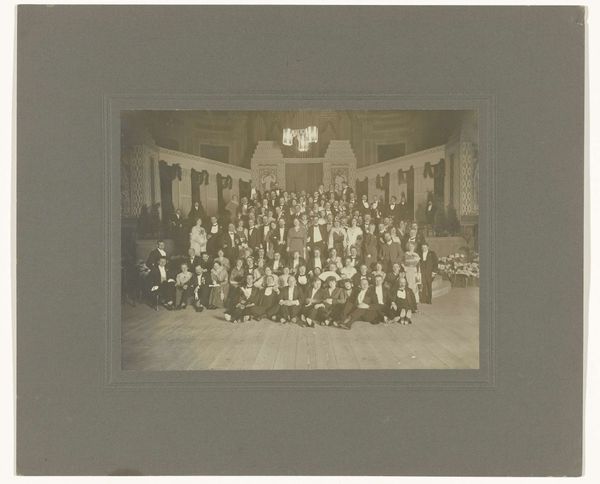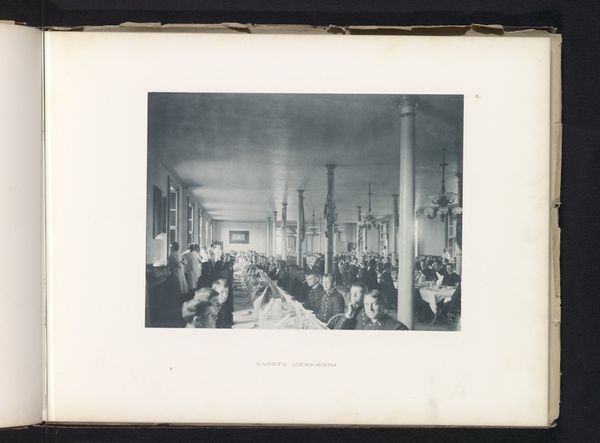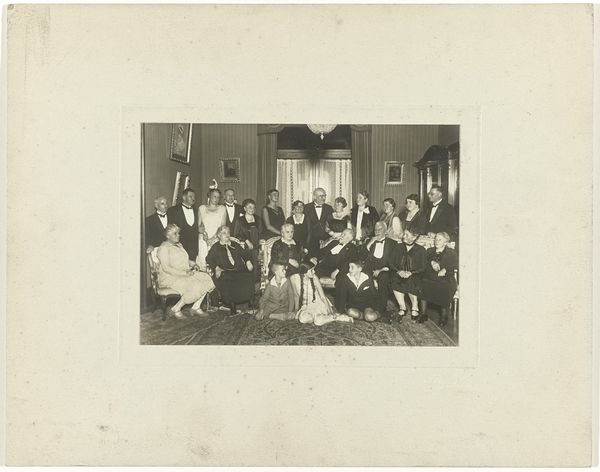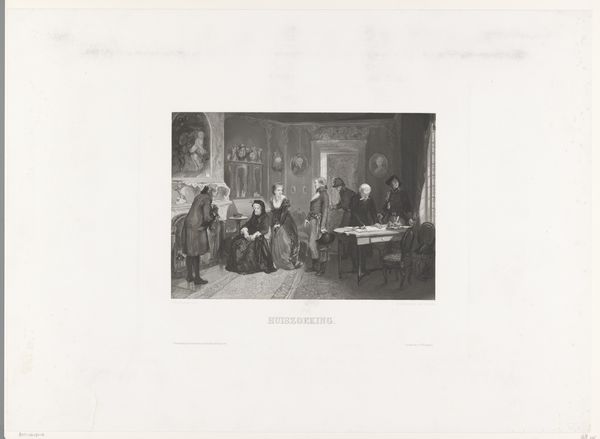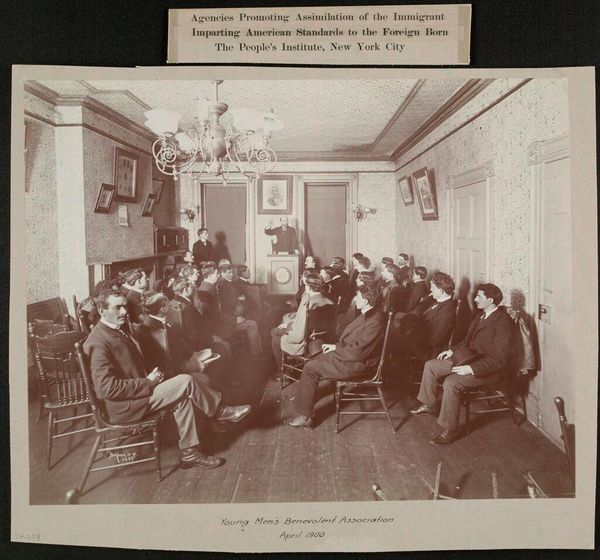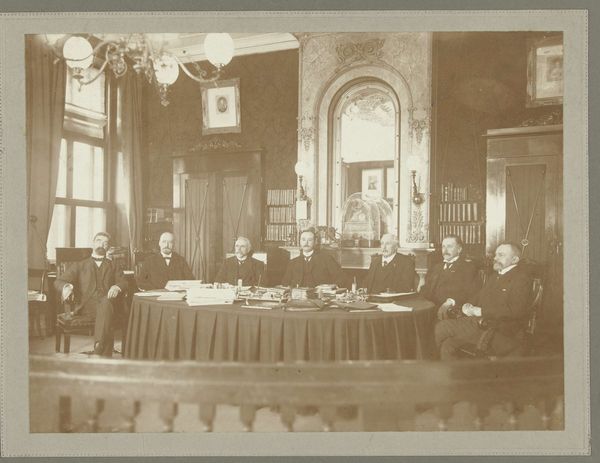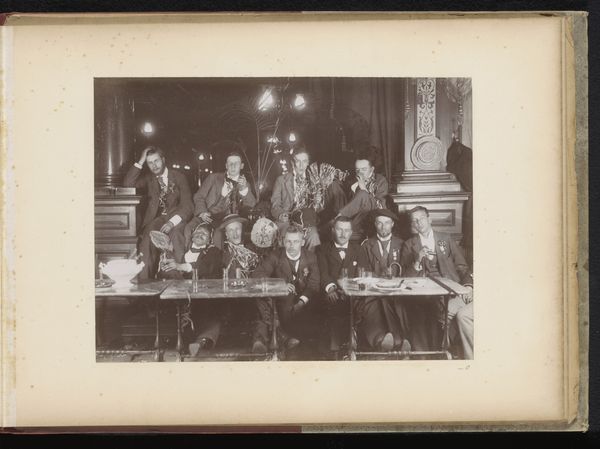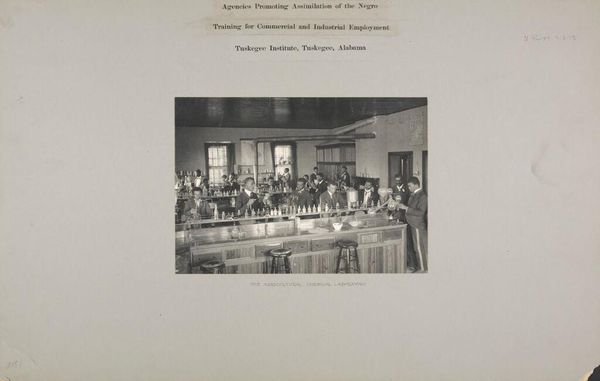
Bijeenkomst van de leden van de Nederlandse vereniging van Letterkundigen. Den Haag, 1918 1918
0:00
0:00
photography
#
portrait
#
pictorialism
#
archive photography
#
photography
#
historical photography
#
group-portraits
#
ashcan-school
Dimensions: height 168 mm, width 224 mm, height 299 mm, width 356 mm
Copyright: Rijks Museum: Open Domain
Editor: This photograph, “Bijeenkomst van de leden van de Nederlandse vereniging van Letterkundigen. Den Haag, 1918,” taken in 1918 by M.M. Couvée, shows a formal gathering of Dutch writers. It's a very staged and somewhat stiff group portrait. What’s striking is how much it seems to say about the social dynamics of the time, but I am not sure what to make of it. How do you interpret this work? Curator: This image offers a fascinating window into the cultural and political landscape of the Netherlands during World War I. As an activist art historian, I immediately think about representation and power. Who is present in this gathering, and perhaps more importantly, who is conspicuously absent? Editor: That's a great question. It does seem a very specific demographic is represented. Curator: Exactly. This photograph documents a meeting of the Dutch Society of Literature, a space traditionally dominated by white, middle- to upper-class men. How might their literary works and the very definition of "Dutch literature" be shaped by this homogeneity? Consider also that 1918 was a time of social upheaval, including burgeoning feminist and socialist movements. Editor: So the image indirectly highlights the exclusive nature of the literary establishment at the time? Curator: Precisely! While the image itself might seem like a simple record, its historical context reveals a powerful statement about the gatekeepers of culture and the voices that were being amplified—or suppressed. Do you notice the prevalence of certain hairstyles, clothing, even posture? Editor: Now that you mention it, it looks quite performative. And exclusionary. It is worth pondering whether they knew this gathering would become archive photography. Curator: Reflecting on this gathering through a critical lens allows us to ask essential questions about cultural power, social justice, and the responsibility of art to reflect the complexities of society. It’s been fascinating exploring this with you.
Comments
No comments
Be the first to comment and join the conversation on the ultimate creative platform.
